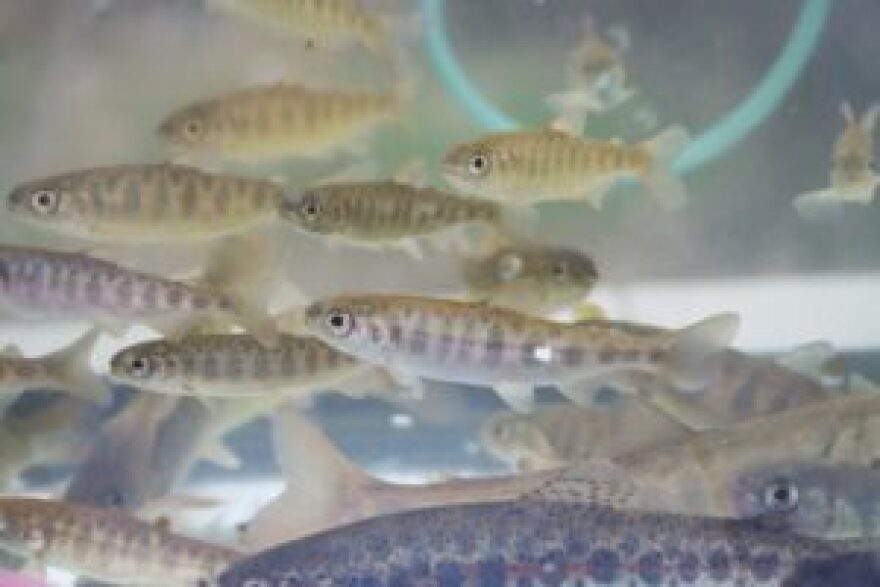Dozens of students oohed and aahed on a cold morning in Anchor Point as biologists spawned a pair of coho salmon and fertilized their eggs.
It was the first lesson in the Alaska Department of Fish and Game’s annual “ Salmon in the Classroom” program, which teaches Kenai Peninsula students about salmon biology in their classrooms throughout the school year.
The class in Anchor Point was one of 27 that watched biologists do “egg takes” last week at the Anchor River and at Bear Creek, near Seward. Students also learned about the life cycles and habitat of Pacific salmon, as well as how to identify different species from their external anatomy.
“These kids absolutely think it is just one of the neatest things seeing a salmon, putting their hands on a salmon,” said Jenny Gates, assistant area management biologist for the northern Kenai Peninsula ADF&G Division of Sport Fish. “The fact that they're taking fertilized eggs back to their school to raise coho, there’s so much excitement and smiles.”
Gates said when students take the fertilized coho salmon eggs back to their classrooms, they’ll incubate them and watch them develop through a number of different life-cycle stages until they become adolescent fish, or fry. In the spring, they’ll release the fish back into Bear Creek or into a stocked, landlocked lake.
ADF&G staff will also guide students through fish dissections and ice fishing as part of the “Salmon in the Classroom” program, which Gates said has been around for more than two decades.
She said students on the Kenai Peninsula — and across Alaska — already know a lot about salmon coming into the program, given its significance to the local culture, environment and economy.
But, she said, there’s always more to learn.
“The message that we're trying to convey to the students is just trying to foster a stewardship for a very important natural resource,” Gates said. “There's all sorts of environmental lessons that go along with our presentations, in addition to just salmon biology.”
For Lucas Stumpf, a fisheries biologist who heads the Kenai Peninsula education program, this work is personal.
He grew up in Palmer and said he can trace his love of biology back to when he was a student in a similar program.
“I remember as a kid —
Stumpf said he hopes the egg take, the fish dissection and salmon release in the spring foster a similar interest in these kids.
“There are multiple reasons why people would want to become a biologist, but it definitely sparked something




